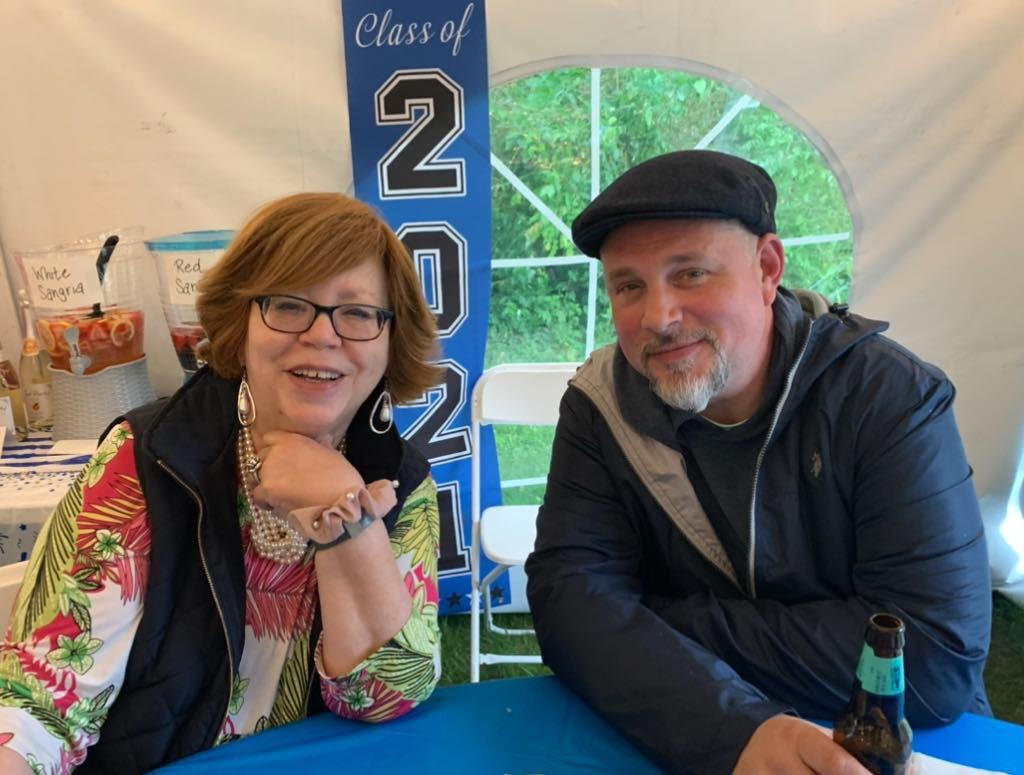Two decades after 88-year-old Edna Schubert was brutally beaten to death in her North Bay Shore home, Suffolk County police say they used something many people use daily to solve the cold case: A camera.
When authorities cataloged the evidence at the crime scene after concerned Frederick Avenue neighbors found the retired widow’s lifeless body in her bedroom on Dec. 12, 2003, a photograph of a fingerprint found in the home proved too blurry for crime scene investigators to match to a potential suspect. But after the retired detective who originally investigated the case called his successors in the homicide squad in 2023 urging them to see if modern technology could help, detectives used advanced photography to produce a higher-resolution image of the original fingerprint photo — and this time, police allege, they found the person it matched.
“With modern high-definition photography, they were able to take a picture of that picture, which turned out to be the defendant’s … left thumbprint and that was allegedly an identical match to the photograph of that latent print,” Suffolk County District Attorney Raymond Tierney told reporters during a news conference Friday. He later added: “The latent print, which was taken with the technology at the time, was not high-def, so if you put it into a database, you were not able to get a match. But if you took a picture of that blurry picture with high-definition photography, you were able to then place it into a database and get a match.”
Authorities identified the suspect as Raul Ayala, who Tierney said lived 200 yards from the victim at the time of the murder was in a police database from a 1995 arrest in Nassau County and had since moved to Talmo, Georgia. Suffolk police working with Southern authorities secured lottery scratch-off tickets and plastic bottles that the 51-year-old suspect had discarded and used the trash to secure Ayala’s DNA and match it to DNA evidence found on the victim’s pantyhose and shirt, according to investigators.
Police arrested Ayala on Jan. 16 in Georgia. He was later extradited to New York, where on Feb. 7 he pleaded not guilty in Suffolk County court to first-degree murder and two counts of second-degree murder. Judge Richard Horowitz ordered the suspect held at Suffolk jail without bail. He is due back in court March 5 and faces up to life in prison without the possibility of parole, if convicted.
“Unfortunately, my client is deaf and cannot speak,” said Ayala’s Hauppauge-based attorney, Christopher Gio. “With the use of a sign language expert, my client denied the charges and maintains his innocence. We certainly intend on defending him and seeking an immediate trial.”
The victim’s murder was four years before the release of the first iPhone, which effectively put cameras in the pockets of millions of people who now use their phones to take abundant pictures, no longer leaving photography to those with stand-alone cameras. But this case was a reminder that sometimes now-ubiquitous cameras can still be used more productively than just taking pictures of people’s lunch, pets, and sunsets.
“Twenty years after the murder, retired homicide Det. Pat Albergo called homicide section,” Tierny said. “He had read a book on advancements in technology in the area of latent fingerprints and DNA and he called homicide to talk about his thoughts on that as well as Edna’s murder … He asked them to reexamine this case, and that is in large part the reason why we are here.”
Tierny said that since Albergo may be called to testify in the case, he could not speak at the new conference, but the retired detective had exclusively spoken to the Press in June about another one of his cold cases — alleged Gilgo Beach serial killer victim Jessica Taylor — that had similarly gnawed at him since his retirement.
“A lot of these cases stick with you, and this was one of them,” Albergo had said of Taylor.
Tierney noted that the feeling was the same in the Schubert case for Albergo as well as the identification section detectives and police in the county crime lab that worked together to identify the suspect.
“Everyone called Edna ‘grandma,’ because that’s how they thought of her,” Tierny said. “As children, the generations of kids in that neighborhood, Mrs. Schubert would watch them ride their bikes in her driveway, they would come in for snacks, she would help them with their math homework. She was the grandma of the neighborhood.”
The use of a camera to crack her cold case appears to be poetic justice for Schubert, who lived alone and didn’t have children of her own but had framed photos of children hanging on her walls, nonetheless.
“I had the opportunity to look at some of the crime scene photos,” Tierney said. “You see photographs of children throughout the house. And you ask yourself, ‘Who were those kids?’ Those were the neighborhood kids. Those were the kids that Mrs. Schubert considered to be her own kids and treated as her own kids.”

































